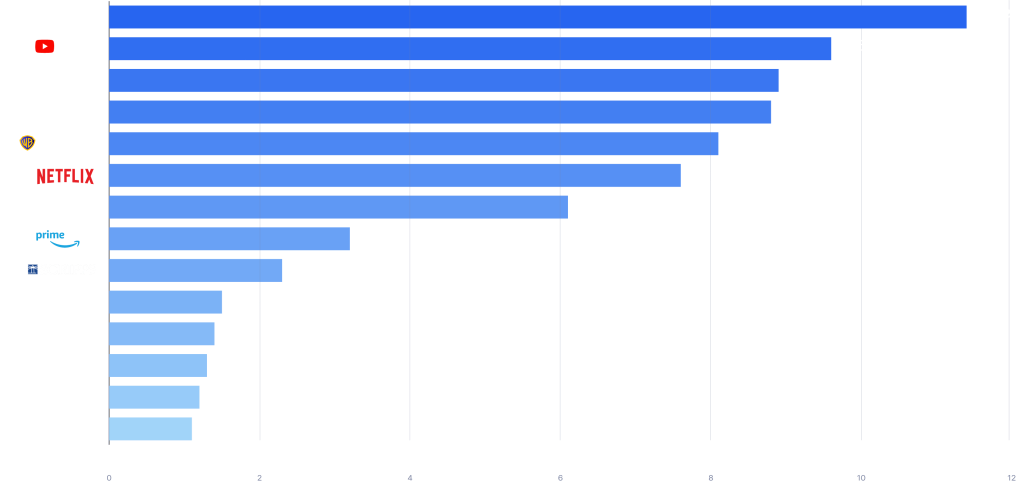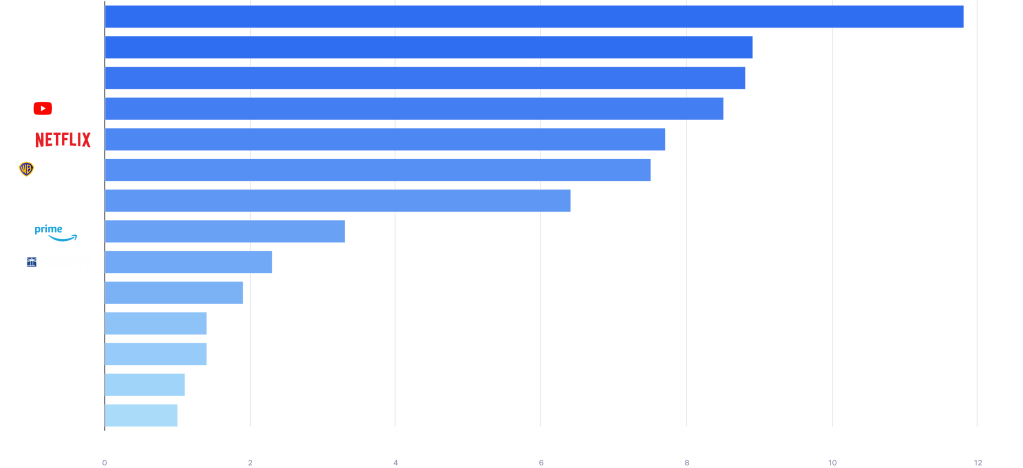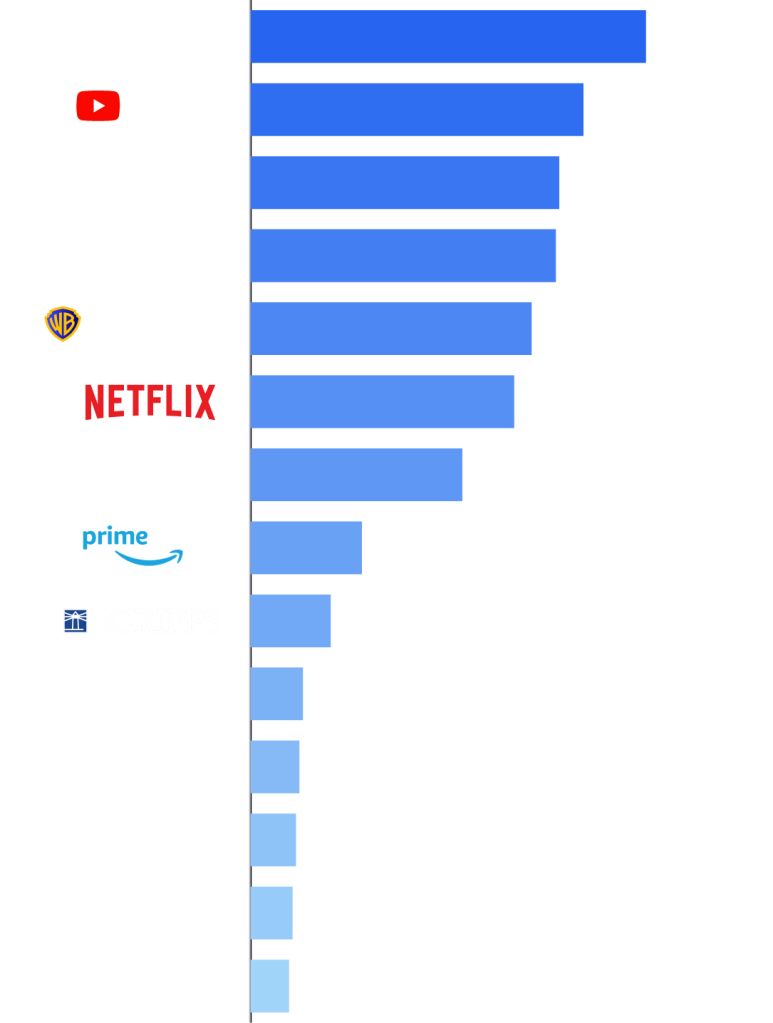Das Gauge™
Trends beim Fernsehkonsum in den U.S.A.
Navigieren Sie die TV-Landschaft mit Präzision. Untersuchen Sie in einer monatlichen Makroanalyse das Sehverhalten der Zuschauer auf den wichtigsten TV-Übertragungsplattformen.
Untersuchen Sie, wie die Amerikaner plattformübergreifend fernsehen
Monatlicher Fernsehkonsum nach Plattform
Juli 2024
Gesamttag | Personen 2+

Copyright © 2024 The Nielsen Company (US), LLC. Alle Rechte vorbehalten.
Trends beim Fernsehkonsum nach Plattform

Copyright © 2024 The Nielsen Company (US), LLC. Alle Rechte vorbehalten.
Entdecken Sie, wie die Amerikaner über verschiedene Medienanbieter hinweg fernsehen
Monatlicher Fernsehkonsum nach Verteiler

Copyright © 2024 The Nielsen Company (US), LLC. Alle Rechte vorbehalten.

Suchen Sie nach weiteren Daten und Trends?
Verschaffen Sie sich jetzt ein umfassendes Bild.
Methodik/FAQ
Alle Ihre Fragen beantwortet: Die Spurweite FAQ
Wie wird "The Gauge" erstellt?
Die Daten für The Gauge werden aus zwei separat gewichteten Panels abgeleitet und zur Erstellung der Grafik kombiniert. Die Streaming-Daten von Nielsen stammen aus einer Teilmenge der Streaming-Meter-fähigen TV-Haushalte innerhalb des nationalen TV-Panels. Die linearen TV-Quellen (Rundfunk und Kabel) sowie die Gesamtnutzung basieren auf der Betrachtung des gesamten TV-Panels von Nielsen.
Alle Daten beziehen sich auf den Zeitraum für jede Fernsehquelle. Die Daten, die einen Sendemonat repräsentieren, basieren auf der Live+7-Nutzung für das Berichtsintervall (Hinweis: Live+7 umfasst die Live-Fernsehnutzung plus die Nutzung von linearen Inhalten bis zu sieben Tage später).
Was ist unter "Sonstiges" zu verstehen?
Im Rahmen von The Gauge umfasst der Begriff "Sonstige" alle andere TV-Nutzung, die nicht in die Kategorien Rundfunk, Kabel oder Streaming fällt. Dazu gehören in erster Linie alle anderen Abstimmungen (nicht gemessene Quellen), nicht gemessenes Video-on-Demand (VOD), Audio-Streaming, Spiele und die Nutzung anderer Geräte (DVD-Wiedergabe).
Ab dem Intervall Juni 2023 hat Nielsen damit begonnen, Streaming-Content-Ratings zu verwenden, um Original-Inhalte zu identifizieren, die von den in diesem Dienst gemeldeten Plattformen verbreitet werden, um die über Kabel-Set-Top-Boxen angesehenen Inhalte neu zu klassifizieren. Diese Inhalte werden dem Streaming und der Streaming-Plattform, die sie verbreitet hat, gutgeschrieben. Außerdem werden sie aus der Kategorie "Sonstige" entfernt, in der sie zuvor aufgeführt waren. Inhalte, die bei der Bewertung von Streaming-Inhalten nicht als Original identifiziert werden und über eine Kabel-Set-Top-Box angesehen werden, werden weiterhin in der Kategorie Sonstige erfasst.
Was ist unter "sonstiges Streaming" zu verstehen?
Zu den als "sonstiges Streaming" aufgeführten Streaming-Plattformen gehören alle Video-Streaming-Angebote mit hoher Bandbreite im Fernsehen, die nicht einzeln aufgeschlüsselt sind. Apps, die für die Bereitstellung von Live-Übertragungen und (linearen) Kabelprogrammen (VMVPD- oder MVPD-Anwendungen wie Sling TV oder Charter/Spectrum) entwickelt wurden, sind von "sonstigem Streaming" ausgeschlossen.
Welchen Beitrag leistet das lineare Streaming?
Lineares Streaming (definiert durch die Aggregation der Betrachtung von vMVPD/MVPD-Apps) ist von der Streaming-Kategorie ausgeschlossen, da die über diese Apps betrachteten Rundfunk- und Kabelinhalte der jeweiligen Kategorie gutgeschrieben werden. Diese methodische Änderung wurde mit dem Intervall Februar 2023 eingeführt.
Was ist mit Live-Streaming auf Hulu und YouTube?
Lineares Streaming über vMVPD-Apps (z. B. Hulu Live, YouTube TV) ist von der Streaming-Kategorie ausgeschlossen. Hulu SVOD" und "YouTube Main" innerhalb der Streaming-Kategorie beziehen sich auf die Nutzung der Plattformen ohne die Einbeziehung von linearem Streaming.

Verwandte Einblicke
Erfahren Sie mehr über die Mediengewohnheiten der Amerikaner
-
Einblicke | 21-08-2024
Ergebnisse, nicht Output: Messung der Wirkung über den gesamten Marketing-Trichter
Erfahren Sie, wie Vermarkter aus EMEA und APAC den ROI über die gesamte Kundenbeziehung hinweg identifizieren, messen und optimieren...
-
Einblicke | 07-08-2024
Der Einfluss des AANHPI-Publikums auf Medientrends
Rose Yan spricht über die einflussreiche Rolle der AAPIHM
-
Einblicke | 05-08-2024
Die entscheidende Rolle von Audio in Marketingstrategien
Bob Pittman über die Rolle von Audio in Marketingstrategien
-
Einblicke | 05-08-2024
Trend-Spotlight: Was uns The Gauge über die Medienkonvergenz zeigt
Einige der erfolgreichsten Streaming-Programme waren nicht neu, sondern lizenzierte Sendungen aus dem Rundfunk und Kabelfernsehen, wie...
Ähnliche Produkte
Unsere Produkte können Ihnen und Ihrem Unternehmen helfen

Bewertungen von Streaming-Plattformen
Gewinnen Sie mit dem Nielsen-Panel für lineare TV-Messungen einen Einblick in die Zeit, die Zuschauer mit dem Ansehen von Streaming-Videoinhalten verbringen, und auf welchen Plattformen.



